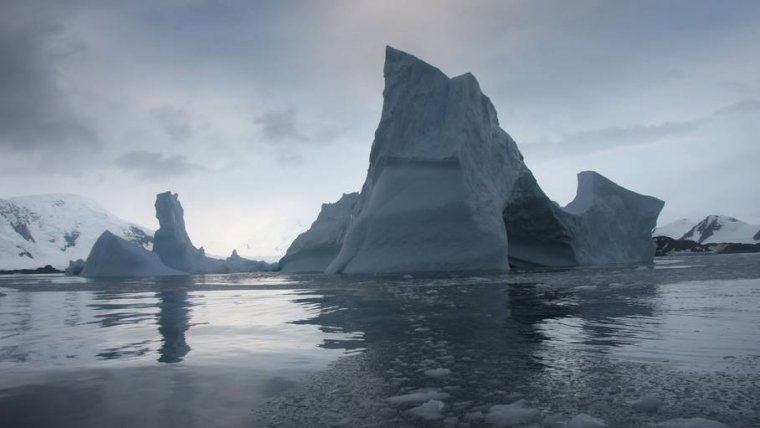| News / Science News |
Antarctica’s Larsen B Ice Shelf Nearing Its Final Act
NASA | MAY 16, 2015
A new NASA study finds the last remaining section of Antarctica's Larsen B Ice Shelf, which partially collapsed in 2002, is quickly weakening and likely to disintegrate completely before the end of the decade.

Antarctica's Larsen B Ice Shelf is likely to shatter into hundreds of icebergs before the end of the decade. ![]()
The remnant of the Larsen B Ice Shelf is flowing faster, becoming increasingly fragmented and developing large cracks. Two of its tributary glaciers also are flowing faster and thinning rapidly. This ice shelf has existed for at least 10,000 years, and soon it will be gone.
Ice shelves are the gatekeepers for glaciers flowing from Antarctica toward the ocean. Without them, glacial ice enters the ocean faster and accelerates the pace of global sea level rise.
Located on the coast of the Antarctic Peninsula, the Larsen B remnant is about 625 square miles (1,600 square kilometers) in area and about 1,640 feet (500 meters) thick at its thickest point. Its three major tributary glaciers are fed by their own tributaries farther inland.
YOU MAY ALSO LIKE





